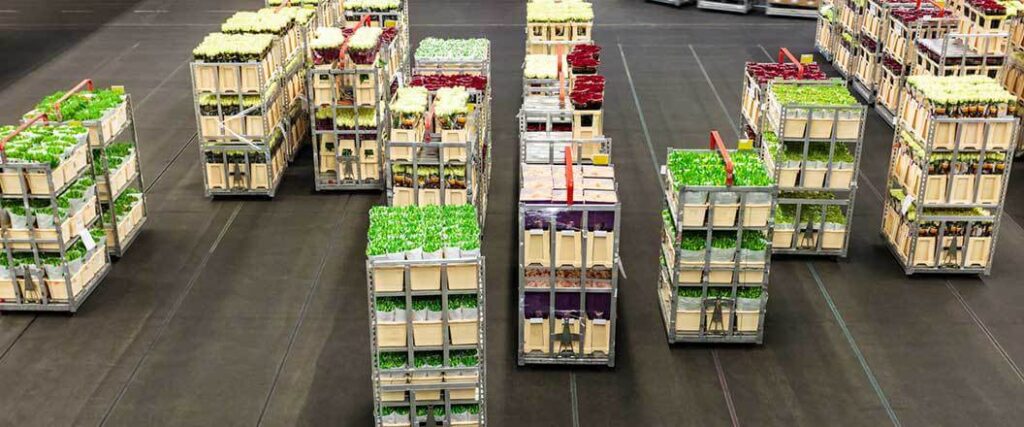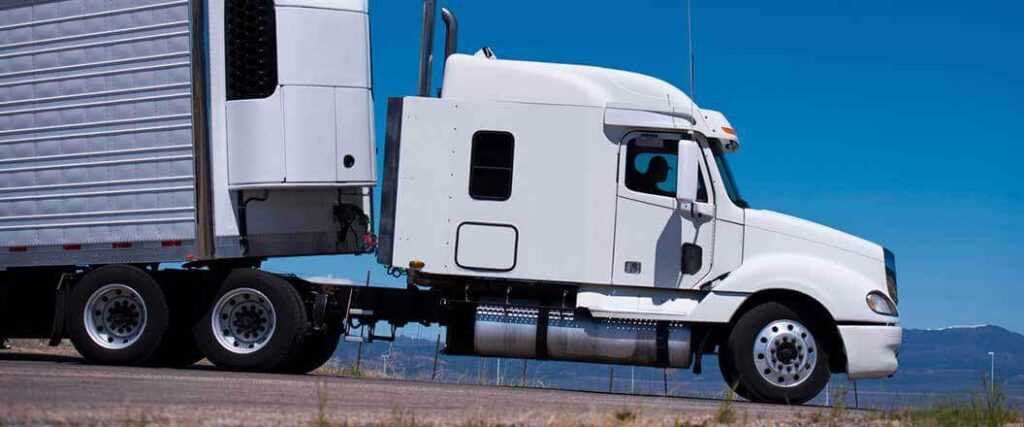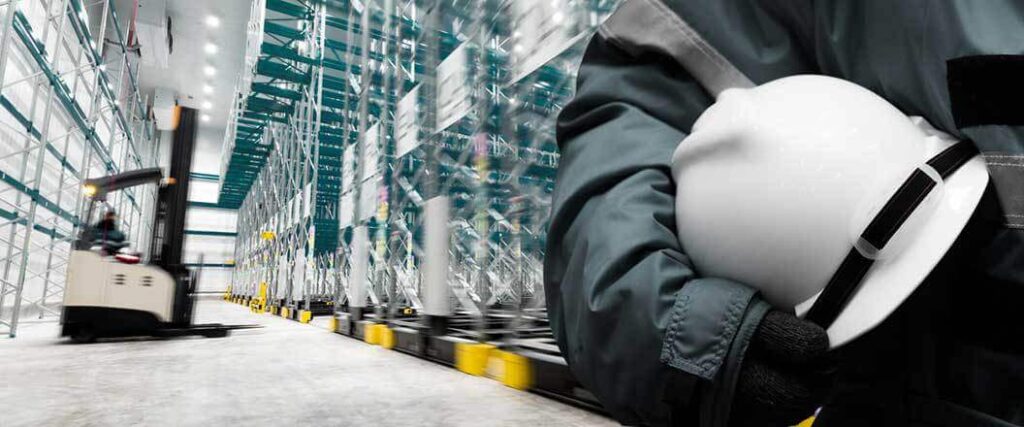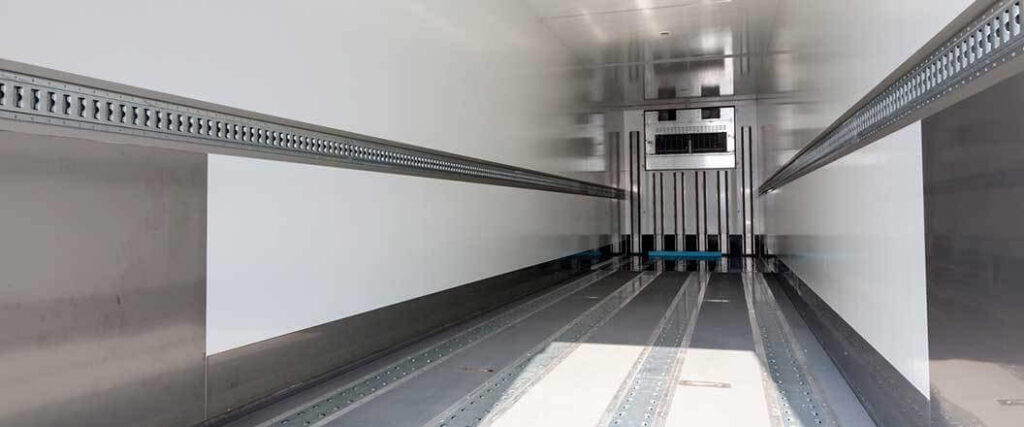Used across a wide variety of industries, refrigerated logistics involves the movement of goods in temperature-controlled environments. When manufacturers, companies, and retailers need to distribute or restock perishable or sensitive commodities, temperature-controlled transportation and logistics may be required.
As well as being subject to varying laws and regulations, refrigerated logistics are also governed by best practices. Organizations, such as the Global Cold Chain Alliance (GCCA) and the International Road Transport Union (IRU), routinely issue best practice updates to enable refrigerated logistics companies, freight forwarders, and transport providers to enhance their temperature-controlled services.

Refrigerated transport refers to the movement of goods in a refrigerated environment. When refrigerated transport is used to move goods from one location to another, they are transported in a temperature-controlled environment.
This may involve using refrigerated trucks, for example, or even refrigerated containers on freight trains. In addition to this, air freight can be moved in temperature-controlled holds or cabins, to ensure the swift delivery of fragile or sensitive goods.
Refrigerated transport often involves keeping goods cool when they are being moved but refrigerated logistics is far more complicated than that. When commodities need to be moved in a temperature-controlled environment, there is often a specific temperature at which the goods must be kept. In some cases, a small temperature range may be appropriate.
As well as moving goods at a cool temperature, refrigerated transport may also include transporting frozen goods in a temperature-controlled environment too. Indeed, some logistics firms also offer temperature-controlled transport services designed to facilitate the movement of goods that need to be kept warm, hot or above a specific temperature.
For transport firms and freight companies, delivering reliable refrigerated logistics requires a wide range of equipment, an in-depth understanding of the legislation governing this type of transportation, detailed knowledge of cross-border restrictions and a high degree of innovation.
When moving temperature-controlled goods from their origin to their destination, they may pass through various different environments and climates. As the external weather conditions could impact the interior of the vehicle, boat or plane being used to transport the goods, robust temperature-controlled systems must be in place.
Cold chain logistics typically refers to a temperature-controlled supply chain. When climate-sensitive goods are produced, specialty logistics are required to ensure they reach the end-user in an appropriate condition. To facilitate this, a ‘cold’ supply chain is required.
Sometimes known as chill chain logistics or cool chain logistics, these goods management processes ensure that commodities can be moved and preserved safely. When undertaken correctly, cold chain logistics can preserve the shelf-life of products for days, weeks, months or even years.
However, it’s essential that every element of the supply chain maintains optimum temperatures. Known as a ‘chain’ because numerous links are involved, it’s vital that each link provides a suitable environment for the goods in question.
If a link is broken and the temperature is too hot or cold, the goods being moved become unusable. When this happens, it can constitute a significant loss for businesses, as well as for logistics companies themselves. With many manufacturers producing hundreds of thousands of dollars’ worth of temperature-controlled goods on a daily basis, it’s imperative that the cold supply chain remains intact.
In addition to financial concerns, there are serious health and safety consequences if temperature-controlled freight isn’t monitored carefully and moved appropriately. When transporting frozen food, for example, if the temperature gets too hot, food will thaw. Changes in temperature could result in frozen food thawing and refreezing numerous times throughout its journey. If it was allowed to reach the end-user following this, it poses a risk to their health.
Due to this, there is a range of agencies that regulate the transportation of temperature-controlled freight. In the U.S., for example, The Department of Transportation, U.S. Customs, The International Air Transport Association (IATA) and The Transportation Security Administration (TSA) regulate shipping procedures. Regulations and guidelines issued by these departments are critical to the safety and success of refrigerated logistics. A number of other government agencies including the FDA (Food and Drug Administration) and similar agencies in other countries oversee and enforce these regulations.

Supply chains can vary depending on the product or goods being produced. However, many companies rely on similar cold supply chains when manufacturing, distributing and transporting goods. A typical cold supply chain may include the following links:
As highlighted by the links, a cold supply chain starts at the point of production and continues right through to the end destination. Throughout the journey of freight, goods may be stored in various locations and transported by different means.
Known as intermodal transportation, various methods of transport can be used to facilitate the movement of temperature-controlled freight. Once goods have been collected from initial warehouse storage, they could be transported vast distances via temperature-controlled containers on ships and boats, for example. From there, refrigerated drayage may be required in order to move the freight to its next storage location.
Drayage refers to relatively short ground transportation which is required to move freight. When temperature-controlled containers arrive at a port via ship, for example, they need to be moved on to pre-designated trucks in order to reach their next location. Drayage refers to this movement and is a critical step in intermodal freight transportation.
Of course, drayage plays a role in cold chain logistics, as well as standard freight shipping. When refrigerated logistics are required, however, it’s essential that all parts of the supply chain, including drayage, can provide an appropriate environment for the goods which are being transported.
There are numerous industries that rely on refrigerated logistics and transport. However, many companies within the food sector routinely use refrigerated transport to ensure their products are still fresh when they reach the end-user. In addition to the food and drink sector, other industries that use refrigerated logistics include:
The food industry is a prime player in the refrigerated logistics industry due to the number of commodities that require refrigerated transportation. The following goods generally require temperature-controlled shipping:
Temperature control is essential for shipping fresh produce, dair, and meat products. Of course, there are various other commodities which also require refrigerated shipping. Common products and materials which must be transported in a temperature-controlled environment include:
In addition to this, there may be other industries that use temperature-controlled transportation despite not strictly needing a chilled or sub-zero environment in which to transport goods. Some electrical equipment and batteries can be dangerous when stored in high temperatures, for example. while transporting them in ambient temperatures may be safe, these manufacturers might opt for temperature-controlled shipping to maintain control over their transport environment and prevent excessive temperatures from damaging the commodity or posing a safety risk.
Check out our article on the types of refrigerated freight for more details on these commodities.

Transporting goods in a temperature-controlled environment is a key element of refrigerated logistics and features prominently among the links in cold chain logistics. For manufacturers, producers, and retailers, effective refrigerated transportation overcomes many of the potential barriers to sale.
When transporting cold goods, for example, logistics firms and freight forwarders must consider the practical and legal needs of shippers. As well as keeping shipments at a specific temperature, shipping companies and freight forwarders also need to consider the implications of border crossings.
Many of the commodities which are moved via refrigerated transportation, such as food, pharmaceuticals, and tobacco, are subject to strict import and export regulations. When transporting these goods, freight companies and customs brokers will need to manage the procedural requirements and necessary documentation, as well as the practical implications of transporting the shipments at an appropriate temperature.
Despite this, numerous types of transport are used to facilitate refrigerated logistics. Land-based transport, such as trucks are by far the most popular form of refrigerated transport. Capable of transporting a reasonably large volume of goods in one load, refrigerated trucks can move shipments swiftly and efficiently.
Furthermore, refrigerated trucks are a cost-effective option for companies who need to transport climate-sensitive goods. As well as moving these commodities around quickly and safely, freight companies can offer low-cost services and reduced shipping rates when using refrigerated trucks for ground services.
Sometimes known as ‘reefers’, refrigerated trucks offer versatility to shippers too. To move a large volume of food, a reefer trailer is usually required. On average, these can move a maximum of 44,000 pounds and have varying lengths between 28 to 53 feet.
While some companies require exclusive use of a reefer trailer, partial truckloads and ‘less than a truckload’ (LTL) shipments can also be facilitated. When various shippers need to move goods at the same temperature, for example, they may be placed into the same container in order to maximize efficiency and minimize costs.
For smaller shipments, refrigerated vans and trucks can also be used. Typically, these feature a built-in refrigeration system that can be modified, depending on the needs of a particular shipment. In addition to this, partially refrigerated vehicles may be used to transport a mixed shipment of goods. If some commodities require a temperature-controlled environment and others don’t, for example, a vehicle with partial refrigeration facilities may be used to transport the entire consignment.
Although ground freight transport typically relies on trucks, trailers, and vans, there are various other options available when it comes to temperature-controlled logistics. When shipping climate-sensitive commodities, freight forwarders may use a range of transportation methods, such as:
With dedicated refrigeration units and climate-controlled containers, shipping temperature-sensitive goods via the sea is a realistic option. Indeed, transporting goods via ship or boat is one of the most popular ways to move shipments which are traveling vast distances.
Although this type of transportation isn’t the fastest option available, it can be cheaper than other forms of shipping. Routinely used to transport fresh produce in climate-controlled environments, sea freight is increasing in popularity when it comes to cold chain logistics.
There has been a significant increase in consumer demand for fresh foods and this has led to a rise in the amount of food produce being imported and exported. As well as purchasing fresh, local produce, consumers routinely want to be able to buy produce which cannot be grown locally, regionally or even in their own country.
By using temperature-controlled sea freight, companies can maintain the freshness and quality of their produce as it travels anywhere in the world. Furthermore, shipping via sea freight can considerably reduce the costs of long-distance temperature-controlled freight.
In addition to this, air freight can also provide a climate-controlled shipping environment. When goods need to be moved quickly, air travel is often the best option. If a gallery on the other side of the world is exhibiting a fine art collection from a museum in New York, for example, it may be flown to its next destination via a temperature-controlled air charter.
Although air travel facilitates fast transportation and offers a climate-controlled environment, it can come at a higher cost than other methods. For express shipments and high-value goods, however, climate-controlled air transportation can be an integral element of refrigerated logistics.
Rail remains another viable option when it comes to transportation in the cold chain supply. With built-in refrigeration in cars and dedicated freight services, it can provide a relatively high-speed method of transportation. while companies can be somewhat limited by the network, temperature-controlled rail transport is often used to facilitate some of the transport required by cold chain logistics.
In reality, many temperature-controlled goods rely on intermodal freight services. This refers to instances in which two or more forms of transport are used to move goods to their final destination. For example, a climate-controlled intermodal transport route may be used in the following way:
Of course, intermodal freight isn’t restricted to transportation via sea or truck. In fact, intermodal shipping services can include any or all methods of freight transportation, including rail, sea, air, and ground.
With all main forms of freight transportation providing effective temperature-controlled options, intermodal shipping plays a significant role in refrigerated transportation and logistics.

Designed to facilitate temperature-controlled ground freight services, refrigerated trucks provide a regulated environment when transporting goods. Typically, a closed system is used to ensure the temperature remains consistent and controlled.
In a refrigerated trailer, for example, a compressor is used to draw in refrigerant in gas form. Once compressed, this refrigerant is converted into liquid which is used by a condenser. Although the liquid remains heated at this point, the condenser features tubing which displaces the heat and allows it to disperse through the fins and fan.
When the refrigerant has passed through the condenser, it no longer retains heat. At this point, a metering valve controls the flow of the cool refrigerant liquid into the evaporator. Once in the evaporator, the refrigerant liquid expands into a gas, which cools the truck. The evaporator typically takes in air from the exterior or from the fins and pushes it through the refrigerant gas.
As the process continues repeatedly, the temperature inside the truck can be made colder and colder as time goes on, thus achieving the desired temperature for transportation.
Of course, there are variations that are used in refrigerated transportation so some vehicles may rely on slightly different systems. Differing types of insulation may be used to enhance the cooling effect and prevent extreme exterior temperatures from affecting the goods.
Essentially, refrigerated vehicles work by removing heat from the air and dissipating it outside of the temperature-controlled environment. Depending on the power of the condenser, this system can create and maintain sub-zero temperatures, which makes it perfect for transporting climate-controlled freight.
Although refrigerated transportation has been used for hundreds of years, the technology has advanced dramatically throughout this time. Indeed, advanced technology is still being created to deliver even more efficient methods of temperature-controlled transportation.
Technology is used to enhance every aspect of refrigerated logistics; from engineering and design to commodity storage and tracking. For example, some fleets now use fuel cells to power refrigeration systems, rather than relying on power from the vehicle’s engine.
In addition, newer forms of temperature-controlled containers are providing increased versatility and efficiency when it comes to refrigerated logistics. Instead of relying solely on refrigerated vehicles, freight forwarders can use refrigerated containers within standard vehicles to facilitate climate-controlled shipping. With the potential to reduce costs and maximize the functionality of resources, this is proving to be a popular option with many shipping companies.
Of course, technological advancements in the refrigerated logistics industry aren’t just focused on how to move goods as quickly, safely and cheaply as possible. Advanced technological solutions also enable freight forwarders and shippers to monitor their shipments throughout their entire journeys.
Specialist tools, such as the electronic data interchange (EDI) are used to provide real-time updates to importers and exporters so that they can track their shipments at any time. With access to real-time information, companies can monitor and track their goods from production areas, on the road, at sea, in the air and in warehouses and storage facilities.
With a similar objective, technology is providing the tools needed to facilitate real-time temperature data too. As well as tracking the location of a shipment, freight companies are using the latest technology to provide real-time temperature, climate, and humidity data too.
This reassures businesses that their valuable, climate-sensitive goods are being stored, moved and transported in appropriate conditions. In addition, it ensures that drivers can monitor temperatures from their cabs and freight company personnel can track temperature changes from a remote location.
Essentially, this type of technology monitors and records the temperature of the cargo throughout its journey. This enables companies to prove they are adhering to the legislation relating to the movement of temperature-controlled goods and gives reassurance to end-users. At a time when companies and freight forwarders are facing increasing regulation, this real-time access to climate data enables the industry to meet the demands of new legislation, such as the Food Modernization Safety Act (FMSA).

Refrigerated transport and logistics offer numerous benefits to both companies and end-users. Reliable refrigerated logistics ensure the safety of goods, protect end-users and facilitate globalization. While there are many advantages associated with refrigerated logistics, common benefits include:
As well as adhering to the relevant legislation governing temperature-controlled transportation, there are various best practices that are commonly accepted as the most effective way of facilitating refrigerated logistics.
Organizations, such as the GCCA, the FDA and the International Warehouse Logistics Association (IWLA), have all released best practice guides pertaining to refrigerated logistics at one time or another. In addition, many companies that offer climate-controlled freight services also issue their own in-house best practice standards.
Common best practices within the refrigerated logistics industry include:
Temperature-controlled ground freight services can be customized to meet the needs of your business or a specific shipment. Generally, climate-controlled trucks can maintain temperatures from 55 degrees Fahrenheit to -20 degrees Fahrenheit, which facilitates the safe movement of a wide variety of cargo.
Furthermore, exclusive use temperature-controlled trucks can be arranged if you need to move large shipments or vast quantities of goods. In addition to this, companies can use less than truckload (LTL) and partial truckload options when it comes to temperature-controlled freight.
If you don’t require the exclusive use of a truck or trailer, for example, booking a partial truckload or an LTL freight service enables your shipment to be transported alongside other goods. With effective segmentation, this provides a cost-effective option for shippers who don’t require the use of an entire truck or trailer.
When using temperature-controlled ground freight services, you’ll be impressed with the range of options available to you. As well as customizing the transportation to suit the needs of your shipment, the most efficient routes and transport options can be planned too.
In some cases, the entire journey can be completed via ground freight services, which can offer a rapid and low-cost option to companies. However, refrigerated truckload services can be combined with other forms of climate-controlled transport to offer a comprehensive intermodal freight solution.

The cost of refrigerated transport and logistics can depend on various factors. As with any freight services, the volume of goods, their weight and size will have an impact on the cost of transportation. In addition, any specialty services you require, such as white glove or expedited, can increase the cost of transporting goods.
However, for the vast majority of businesses, the cost of using outsourced refrigerated logistics is far cheaper than attempting to purchase and maintain your own fleet. With access to a wide range of vehicles, transportation facilities and equipment, the array of services offered by an established logistics firm simply cannot be emulated by in-house fleets. Indeed, companies can access climate-controlled transportation services much more cheaply when they rely on reputable third-party logistics firms.
When managing your refrigerated logistics budget, it’s important to consider whether an express service is required. While an air charter may be the fastest way of moving goods, it can be the most expensive option. If a short deadline isn’t imposed, shipping through other methods can provide a cheaper alternative.
Using refrigerated logistics enables companies to reach more markets than ever before. While temperature-sensitive goods were once limited to the local population, refrigerated transportation has enabled businesses to reach customers and clients across the globe.
When you assess refrigerated logistics in terms of the business it generates and the sales it facilitates, it’s clear that the cost of managing cold chain logistics is minimal compared to the return these distribution channels offer.
Refrigerated logistics are relied upon by governments, non-profit organizations and private companies all over the world. In fact, millions of businesses use refrigerated transport to facilitate their operational success.
When it comes to using refrigerated logistics, there is no limitation on who can benefit from these services. Providing the goods you are transporting can be moved to their destination legally, you can make use of efficient and cost-effective temperature-freight services.
When you’re moving climate-controlled shipments to a specific destination, standard regulations will still apply. If you are shipping goods across a border, for example, you will need to adhere to the relevant customs requirements and country-specific import regulations.
In fact, many of the goods which require temperature-controlled transportation also happen to be subject to specific import restrictions. When shipping food and produce to another country, for example, you may need to adhere to specific regulations or obtain a particular license.
Due to this, working with a full-service logistics company that operates globally can be advantageous. As well as providing reliable and state-of-the-art temperature-controlled logistics, a global logistics company can also provide in-house customs brokerage services and manage every aspect of your shipment.
Contrary to popular belief, refrigerated transportation has been around for centuries. As far back as the 1700s, fishermen were using ice to keep their catch fresh while they took it back to shore. while there has always been a demand for cold chain logistics, it wasn’t until the early 20th century that refrigerated trucking first came to prominence.
First used to transport meat, refrigerated trucks and trailers provided a cheaper and faster alternative to rail transport. This trend continued until the mid-1930s when portable air conditioning units were attached to vehicles so that perishable items could be transported safely.
In the 1940s, the first vehicle featuring a wet ice bunker was constructed. Using power from a gas engine and a blower to facilitate cooling, this was an efficient way of providing a cool environment for transportation. It wasn’t long, however, until the first refrigerated truck came to the market.
Since the 1950s, technology has changed and improved significantly. Increasing accuracy enabled freight companies to guarantee temperatures throughout transportation and more advanced refrigerated systems allowed for a wide range of temperatures. Indeed, the effectiveness and accuracy of these systems enabled goods to be protected for longer periods of time, thus facilitating longer journeys and wider transportation options.
Now, refrigerated trucking offers an utterly reliable service. With temperature-controlled trailers, multi-temperature trucks and climate-controlled containers, refrigerated logistics offers more versatility than ever before. In addition, new methods of temperature monitoring, real-time data access, and shipment tracking ensure compliance with the latest rules and regulations, as well as a better service for both companies and end-users.

USA Refrigerated Freight stands out as the ultimate choice for your reefer drayage and we pride ourselves on offering top-notch services.
Give us a call at (866) 849-4923 to discuss your refrigerated shipping needs and request a risk-free quote. Find out why businesses trust USA Refrigerated Freight for their temperature sensitive shipments.
USA Refrigerated Freight
315 NE 14th Street #4122
Ocala, FL 34470